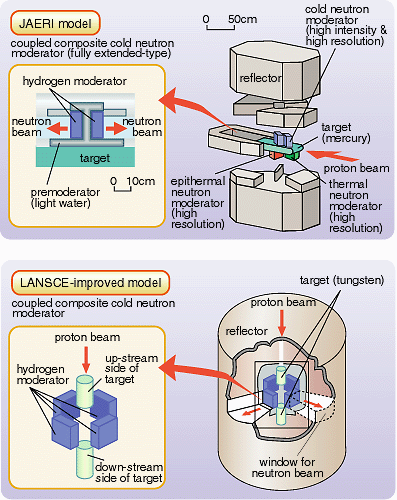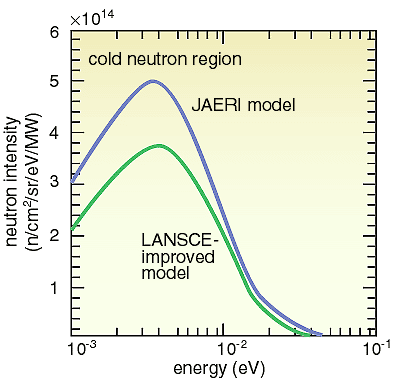| In the 21st century, material science is expected to make great strides
with the remarkable evolution of neutron scattering research, which
is a main theme of neutron science. A cold neutron, of which wavelength
has the same order of size as high polymers and biological materials,
is expected to be a powerful tool to analyze these materials. So, a
neutron-scattering target is being studied and developed to generate
cold neutrons with high intensity and resolving power. In order to generate
high intensity neutrons, a proton beam collides with the target, and
plenty of high energy neutrons are generated and then, the neutrons
are decelerated with the extremely-cooled, hydrogen-liquid moderators
placed around the target. The performance of the neutron-scattering
target is determined by both the amount of generated neutrons and the
efficiency of the deceleration. The newly designed JAERI-target system,
uses mercury which is of high density and has extremely high cooling
efficiency. For the deceleration, fully extended hydrogen moderator
and light water premoderators are installed. The structure and configuration
of the premoderators are newly devised in a way never considered before.
A 40% increase of neutron yield will be achieved by comparison with
existing targets according to the calculations. These results are the
object of great interest by world researchers, who are now competing
to develop a neutron-scattering target. |

